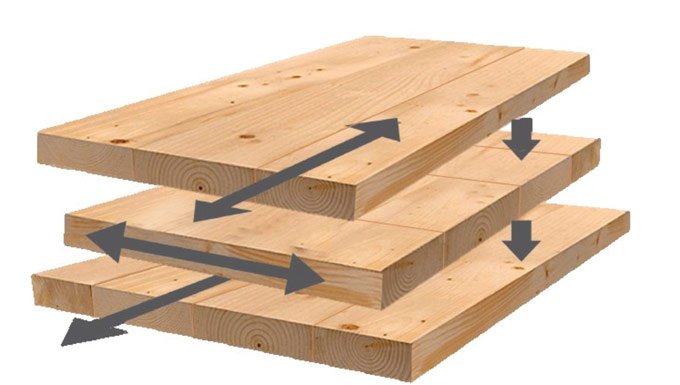Costs and Benefits of Cross Laminated Timber Construction
Cross-laminated timber (CLT) is a modern and efficient construction option with significant benefits both financially and environmentally. Here, we examine the costs and benefits associated with the use of CLT in construction.
Benefits of Cross Laminated Timber Structures
1. Reduction of Weight and Foundation Costs:
Timber is about one fifth of the weight of concrete, significantly reducing the foundation load and construction costs. This can be particularly beneficial in areas with poor soil conditions.
2. Faster Construction:
Prefabricated CLT slabs allow for faster construction of buildings, reducing construction time and therefore overall labour costs.
3. Reduced Scaffolding Requirements:
The use of CLT can reduce rental time and scaffolding needs, saving up to 20% of total scaffolding costs.
4. Environmental Benefits:
Timber is a renewable resource and stores carbon, helping to reduce the carbon footprint of construction.
5. Aesthetic and Functional Flexibility:
CLT panels can be visible, saving costs from the absence of drywall and painting, while offering an attractive aesthetic.
“
Cross-laminated timber offers an efficient and environmentally friendly way of construction that can save time and money, despite the initial investment and additional fire safety and maintenance requirements. With the right approach and early integration into the design, CLT can prove to be an excellent choice for modern construction
.”
Costs of Cross-Cut Timber Construction
1. Initial Material Costs:
CLT may be more expensive than traditional materials such as concrete and steel, but this difference is outweighed by the long-term benefits.
2. Fire safety costs:
Compliance with fire safety requirements can increase costs, requiring additional investment in sprinklers, larger wooden sections and other fireproofing materials.
3. Specialisation and Training:
CLT construction requires skilled craftsmen and staff training, which can increase initial costs.
4. Maintenance and Repairs:
Although CLT is durable, maintenance and repairs may require special materials and techniques, adding to long-term costs.



